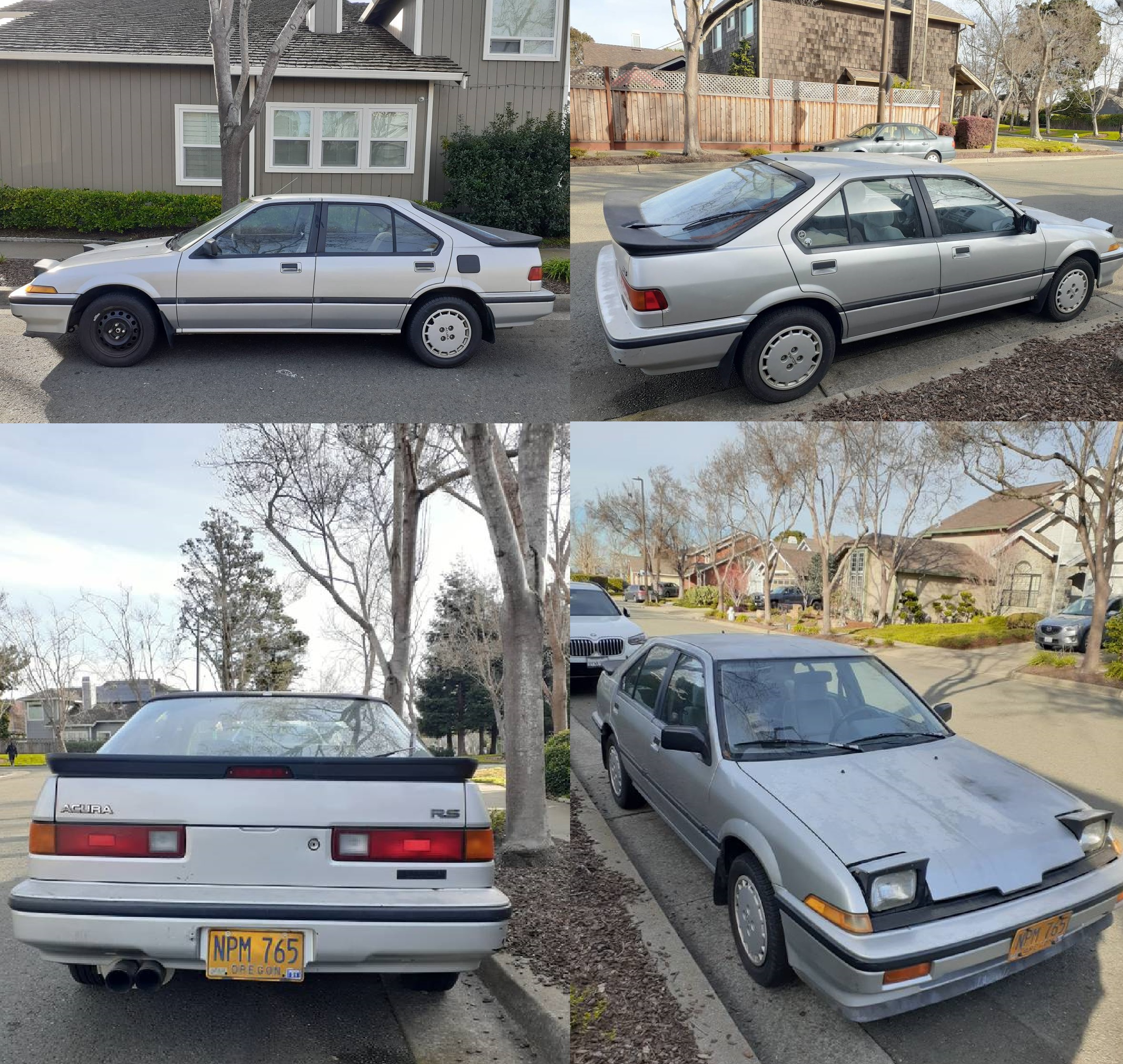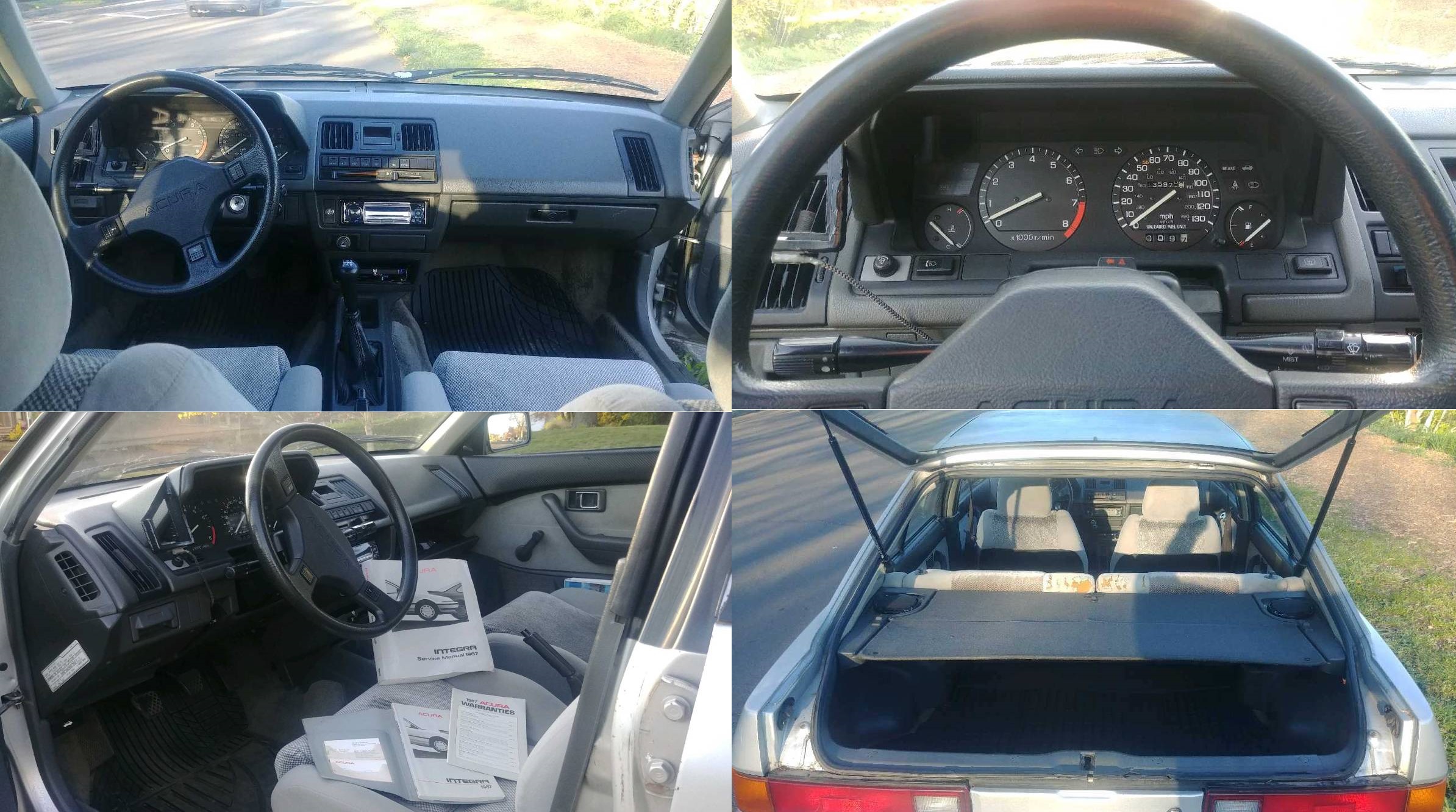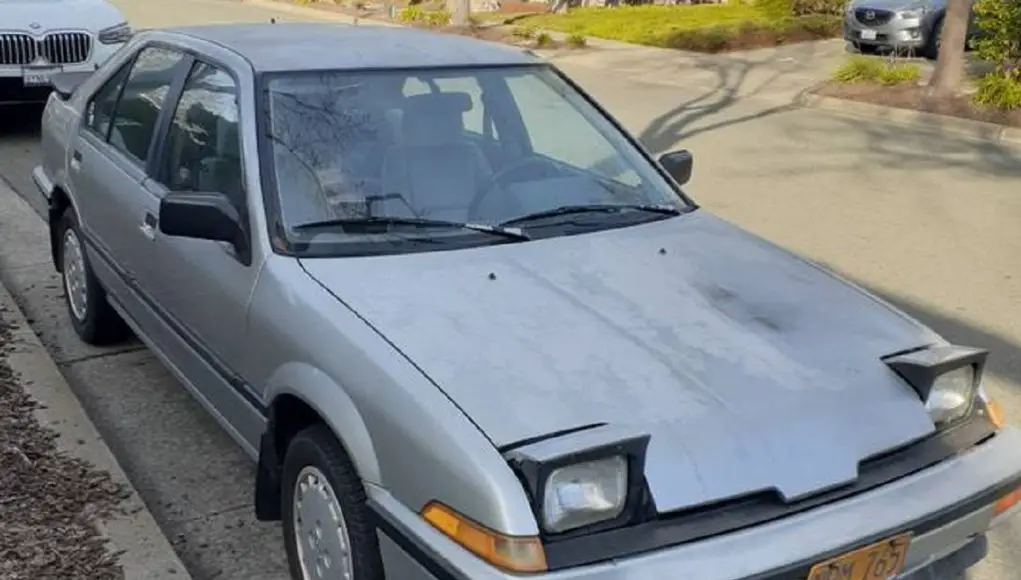This accessory came standard for MY 1986-1987 Acura Integras.
Scrolling through interesting Craigslist ads in California like one does on the weekend and I came across this solid looking 1987 Acura Integra RS 5-speed manual five door in Quartz Silver for the low, low price of $1,600 sitting in Alameda.
With just 138,000 miles on the odometer, this first gen Integra has what it takes to be the perfect daily and/or rad project.
Check out a gallery of photos of this minty Integra below. Link to the archived Craigslist ad is here.


There is a lot going for this Integra. Photos only show minor dings and dents. No mention of and a quick once over showing no major damage means this Integra’s been relatively taken cared for.
While 138,000 miles is high, it’s certainly on the lower end of the spectrum for an older Acura.
“Lots of new parts already done on the engine” the seller mentions.
“Shifts crisp and smooth, starts, stops and drives good. Aftermarket performance cat-back exhaust out back. Fading original silver paint and one non-original wheel from an unknown Acura.”
1987 meant only two trim levels, Regular and Luxury series. RS means 14-inch hubcaps , roll up windows, not as plush 7-oz cut pile carpeting (LS got 14-oz,) no sunroof, and no cruise control.
Standard RS features only included a rear defroster and a tilt steering wheel.
The real selling point for first gen Acura Integras was Acura’s fuel injected, aluminum block D16A1 16V four cylinder under the hood. Dubbed the Browntop before a handful of improvements in ’88, this F1 inspired engine made an adequate 113 HP at a screaming 6,250 RPM and 100 lb-ft.
A high revving engine and sporty suspension setup contribute to a lively driving experience.
“This lightweight car can pretend to be a hushed, premium-brand luxury conveyance, but it really wants to be a raucous sports coupe.” Motor Trend wrote recently testing out a first gen Integra.
“It’s a car that looks and feels grown-up, but is damn near impossible to be mature in.”
For model year 1986-1987, Acura threw in the factory service manual as standard as evidenced by the photos. As the definitive repair guide, any repairs and maintenance is well documented.
A look inside shows how well Acura engineered this car, the seats and other touchpoints hardly show their age.
The cons of this particular Integra come from it being a three decades-old car. Prospective buyers should expect to change the timing belt and water pump just to be on the safe side and set aside a couple hundred for a suspension refresh as bushings and shocks might be all original.
Although Californians might be discouraged by the Oregon plates, registering and passing smog should be no problem if this Integra is in even half decent shape under the hood.
As mentioned, this Integra is a prime candidate for a Rad project or, with reasonable mileage, a solid daily driver.
If I was in the market for this exact car, I’d buy it, refresh it as best I can, but keep it 100 percent original. I’d upgrade the brake pads to something with some bite, throw on modern tires, and source an original hubcap, but that’s as far as I’d go.
I’d definitely hire a paintless dent removal specialist to work their magic. Paint correction might be a no-go considering how thin the clear coat already is.
Modern cars are becoming increasingly complicated, and it’d be a disservice to mod this truly analog piece of Acura excellence in the face of a turning technological tide.




Is the integra still for sale